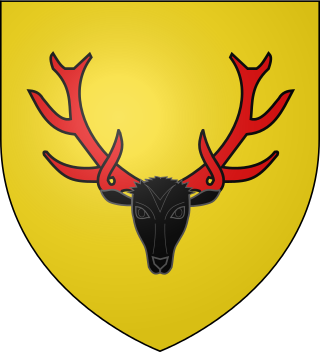
The International Astronomical Union is an international non-governmental organization (INGO) with the objective of advancing astronomy in all aspects, including promoting astronomical research, outreach, education, and development through global cooperation. It was founded on 28 July 1919 in Brussels, Belgium and is based in Paris, France.

Planetary nomenclature, like terrestrial nomenclature, is a system of uniquely identifying features on the surface of a planet or natural satellite so that the features can be easily located, described, and discussed. Since the invention of the telescope, astronomers have given names to the surface features they have discerned, especially on the Moon and Mars. To found an authority on planetary nomenclature, the International Astronomical Union (IAU) was organized in 1919 to designate and standardize names for features on Solar System bodies.
In astronomy, stars have a variety of different stellar designations and names, including catalogue designations, current and historical proper names, and foreign language names.

Alexander Calder was an American sculptor known both for his innovative mobiles that embrace chance in their aesthetic, his static "stabiles", and his monumental public sculptures. Calder preferred not to analyze his work, saying, "Theories may be all very well for the artist himself, but they shouldn't be broadcast to other people."

The Calder Memorial Trophy is an annual award given "to the player selected as the most proficient in his first year of competition in the National Hockey League (NHL)." It is named after Frank Calder, the first president of the NHL. Serving as the NHL's Rookie of the Year award, this version of the trophy has been awarded since its creation for the 1936–37 NHL season. The voting is conducted by members of the Professional Hockey Writers' Association at the conclusion of each regular season to determine the winner.

The Calder Cup is the trophy awarded annually to the playoff champions of the American Hockey League. It was first presented in 1937 to the Syracuse Stars.
In ancient times, only the Sun and Moon, a few stars, and the most easily visible planets had names. Over the last few hundred years, the number of identified astronomical objects has risen from hundreds to over a billion, and more are discovered every year. Astronomers need to be able to assign systematic designations to unambiguously identify all of these objects, and at the same time give names to the most interesting objects, and where relevant, features of those objects.

A dwarf planet is a small planetary-mass object that is in direct orbit around the Sun, massive enough to be gravitationally rounded, but insufficient to achieve orbital dominance like the eight classical planets of the Solar System. The prototypical dwarf planet is Pluto, which for decades was regarded as a planet before the "dwarf" concept was adopted in 2006.

The International Astronomical Union (IAU) defined in August 2006 that, in the Solar System, a planet is a celestial body that:
- is in orbit around the Sun,
- has sufficient mass to assume hydrostatic equilibrium, and
- has "cleared the neighbourhood" around its orbit.

Clan Calder is a Highland Scottish clan. The clan is recognised by the Lord Lyon King of Arms but as it does not currently have a clan chief it is therefore considered an armigerous clan.

Matisse is an impact crater on the southern hemisphere of Mercury. Matisse takes its name from the French artist Henri Matisse, and it was named by the IAU in 1976.

Raphael is a crater on Mercury. Its name was adopted by the International Astronomical Union (IAU) in 1976, and is named for the Italian painter Raphael. It is Tolstojan in age.
The International Astronomical Union (IAU) established a Working Group on Star Names (WGSN) in May 2016 to catalog and standardize proper names for stars for the international astronomical community. It operates under Division C – Education, Outreach and Heritage.
Calder Hill is a small mountain chain in the Central New York region of New York. It is located north of Otego, New York. It is made of two main peaks with the highest being 1841 feet.

Villa-Lobos is a crater on Mercury. Its name was adopted by the International Astronomical Union (IAU) on September 25, 2015. Villa-Lobos is named for the Brazilian composer Heitor Villa-Lobos.












